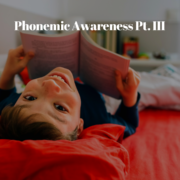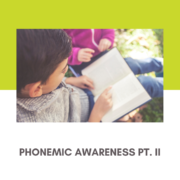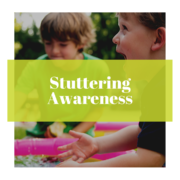Phonemic Awareness Pt. I
Most adults do not remember learning how to read. We likely remember fumbling through picture books and sitting crisscross applesauce during story time while the teacher pointed word by word on a giant-sized story. We probably remember counting the pages to the next chapter in our first chapter books. We may remember all of these initial interactions with literacy, some fond, some agonizing—but few of us remember how, exactly, we learned to read.
Besides the good ole “sound it out” adage that my parents and teachers would push, I honestly do not remember much of my own initial reading instruction. And while methodology and strategies have evolved, the struggles with reading still exist for many children. There is no magical answer when it comes to learning how to read; however, there are a couple of strategies that parents and educators can employ to ease the journey.
Hear it out
It turns out that the antiquated advice to simply “sound it out” while struggling to read a word is not too far off. However, some key components are missing that would make all the difference—and it starts with phonemic awareness. Phonemic awareness is a fancy way to describe one’s ability to identify, manipulate, and distinguish units of sound—phonemes—and how those units work together to make words. For instance, a child does not need to know how to spell cake to know that it is different from the word bake. Their ability to distinguish the different sounds or phonemes—“c” vs. “b”— is the first step to understanding written language.
Start simple
Before even putting written words in front of a child to read, try activities that build phonemic awareness just by listening. They can be hugely beneficial, and also much less intimidating than trying to read text right off the bat!
An easy way to start measuring and improving upon a child’s phonemic awareness is to list 3-4 words orally, such as spoon, step, salt, and dot. Pronounce the words clearly and deliberately several times. Then ask your child if the beginning sound is the same for each word. Ask which word has a different beginning sound. Then isolate just that sound—“d” vs. “s.” Prompt your child to simply repeat the individual phoneme “d,” as opposed to “duh,” as this pronunciation could complicate things later. Model how that isolated phoneme sounds, for instance “m” sounds like “mmmm,” not “muh.”
Once they have identified the beginning phoneme (sound) that doesn’t fit the others in the list, ask your child to think of another word that starts with the “d” sound. You can also use image cards to represent the one-syllable words from your list. Have your child sort the picture cards by beginning phonemes. Remind them to orally say the word that the image depicts while they sort. Just remember that the card should contain only the picture—no word or label, as that will come later. With this method, the focus really is on letter sounds in isolation to familiarize beginning readers with letter sounds, then syllable sounds, then words.







